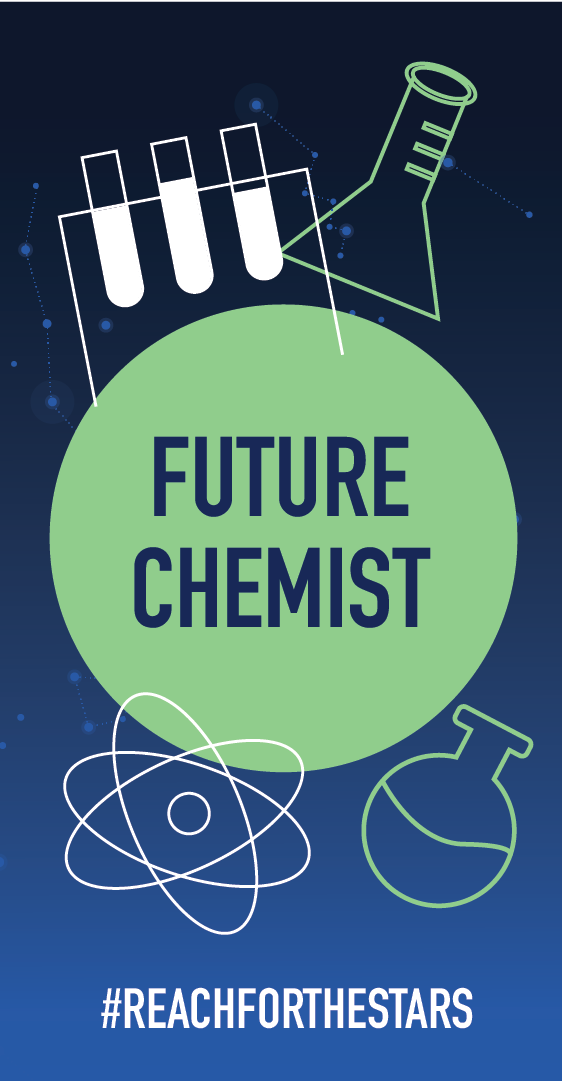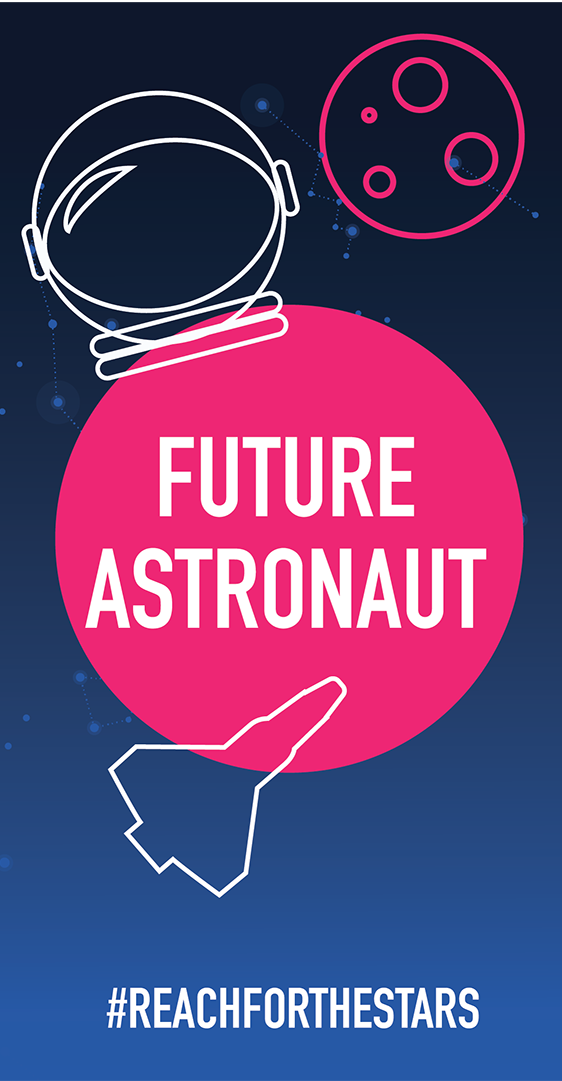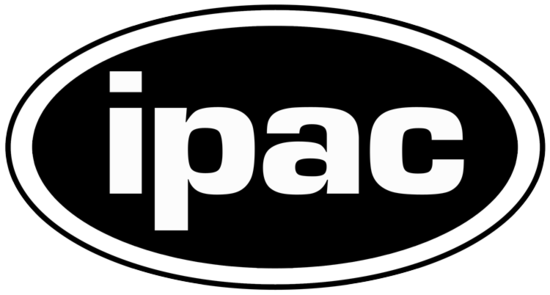


A free augmented reality (AR) app that can be used on most AR-compatible tablets and smartphones (iOS & Android platforms). Link to full press release
Download the app: iOS/Apple | Android
(Available with closed-captions at YouTube)

Featured by Apple for Women's History Month (March 2024)! Find your favorite Reach Across the Stars: Women Space and Science Heroes stories in our new Apple Maps Guide.
Discover a New Hero
The history of women's contributions to the fields of science, technology, engineering, and math (STEM) is long and varied. This series highlights some of the women who have made important discoveries and have had a crucial impact on STEM fields. Learn about some of our featured inventors, explorers, and researchers here:

Sally Ride
When Sally Ride flew aboard Space Shuttle Challenger in 1983, she became the first American woman to reach space. She graduated from Stanford University with a double major in physics and English, and then went on to earn a master’s and Ph.D. in physics from the university before applying to the astronaut core in 1978. Following the loss of Challenger in 1986, Ride served on the presidential commission to investigate the accident. Once she left NASA, Ride went to the University of California, San Diego and started her own company to inspire girls and young women to pursue their interests in science and related fields.

Jessica Watkins
Jessica Watkins was selected by NASA to the 2017 Astronaut Candidate Class. The Colorado native earned her PhD in Geology from the University of California, Los Angeles (UCLA). Excited to potentially go into space, Watkins also realizes that this wouldn’t be possible if not for women like Dorothy Vaughan, Katherine Johnson and Mary Jackson. Currently, Jessica is training and preparing for her possible voyage to space. Many of her training tasks are out of the ordinary and simulate space environments, like the NASA Extreme Environment Mission Operations mission in the only Aquatic habitat in the world.

Christina Hernandez
Christina Hernandez is a systems engineer who works on NASA’s Mars 2020, the newest rover headed to the Red Planet (currently scheduled to arrive in early 2021). Her job at NASA’s Jet Propulsion Laboratory in Pasadena, California is to make sure that instruments aboard Mars 2020 are designed, built, tested, and will operate correctly once the rover arrives on the Martian surface. She says her advice to others is to be as fearless as possible since “every explorer fails, but they also learn from failures.”

Melba Roy
After graduating from Howard University in 1950 with a Master’s degree in mathematics, Melba Roy Mouton worked for the Army Map Service and Census Bureau before transferring to NASA in 1959. She headed a group of NASA mathematicians, known as “computers,” who tracked early Echo satellites in Earth orbit. Her computations helped produce the orbital element timetables by which millions saw the satellite from Earth as it passed overhead. She received an Exceptional Performance Award and NASA’s Apollo Achievement Award.

Hedy Lamarr
Hedy Lamarr was a scientist and inventor who helped pioneer the technology that helped American naval torpedoes avoid being detected by the Nazis. Later, her work would become the basis for modern WiFi, GPS and Bluetooth technology. Born in Austria in 1914, Lamarr was a pianist, dancer, and could speak four languages, while always showing an interest and ability in inventing and improving devices. She began acting as a teenager and eventually starred in many Hollywood films. In 2014, Lamarr was inducted into the National Inventors Hall of Fame.

Mae Jemison
Mae Jemison is a physician, Peace Corps volunteer, teacher, astronaut, accomplished dancer, founder of two technology companies and speaks four languages. She attended Stanford University when she was just 16 years old, and earned her doctorate in medicine from Cornell University by the time she turned 25. In 1983 , she applied to the NASA program, after being inspired by Sally Ride, the first American woman in space, and Nichelle Nichols, an actor in Star Trek. In 1992, Dr. Jemison flew into space aboard the Space Shuttle Endeavour, becoming the first African-American woman in space.

Valentina Tereshkova
By the time Soviet cosmonaut Valentina Tereshkova was launched into space on July 16, 1963, she had already spent much of her life in the air. She became interested in parachuting at a young age, which led her to be recruited into the Soviet space program. Along with four other women, Tereshkova trained for 18 months to prepare for space flight. She was the only one of the five who ultimately flew into space. During her mission, Tereshkova orbited the Earth 48 times. Afterward, she remained active in the space community, and her legacy as the first woman in space has been celebrated around the globe.

Vera Rubin
In the 1970s, astrophysicist Vera Rubin discovered evidence that the Universe was made of more than what could be seen with telescopes — today known as "dark matter". Born in 1928, Vera was drawn to watching the stars at an early age. Her passion would lead her to become the sole astronomy major in her graduating class at Vassar in 1948. After Princeton denied her admittance to graduate school due to her being a woman — a policy that stood until 1975 — Rubin pursued her advanced training at Cornell and then Georgetown, where she completed a Ph.D. She was a life-long advocate for women in science and scientific literacy.

Mary Golda Ross
Born in 1908, Mary Golda Ross was a member of the Cherokee Nation, and thought to be the first professional Native American female engineer. In 1942, after teaching math and science in rural Oklahoma, she earned a master’s degree and was hired as a mathematician for the Lockheed Corporation in California. During her career, she worked on many projects involving aeronautics and interplanetary spaceflight. Ross is considered one of the field’s “hidden figures” because her contributions have historically been overlooked.

Ellen Ochoa
Ellen Ochoa, trained as an engineer and astronaut, was the 11th director of NASA’s John Space Center in Houston, TX, making her the first Latina, and the second female to lead this storied organization. Ochoa studied electrical engineering at Stanford University where she ultimately received her Ph.D as a physics and optics researcher. She became the first Latina female astronaut to go into space when she served as a mission specialist aboard the Space Shuttle Discovery on its flight in April 1993. In subsequent years, she joined three more space flights, logging more than 40 days in space. In 2018, she was inducted into the International Air and Space Hall of Fame.

Wanda Diaz
By converting scientific data into sound, astronomer Wanda Diaz Merced is helping to explore the Universe in new and innovative ways. Through a process called “sonification,” she turns data from cosmic objects, including stars, into audible sound through physical properties like pitch and duration. After completing an undergraduate degree in astronomy, Wanda received her Ph.D. in computer science. "If we only see with our eyes, our perception is very narrow," said Diaz, who lost her sight as a young adult.

Cady Coleman
Cady Coleman’s accomplishments include achieving the rank of U.S. Air Force colonel, obtaining a Ph.D. in chemistry, and being selected for the astronaut core. She logged over 180 days in space. In 1999, she was the mission specialist aboard Space Shuttle Columbia that launched NASA’s Chandra X-ray Observatory. After that mission, Cady became the Chief of Robotics for NASA’s Astronaut Office and then returned to space for a mission aboard the International Space Station. She took her flute with her for her stay and played the first ever Space-Earth duet.

Ellen Stofan
When Ellen Stofan became the Director of the Smithsonian’s National Air and Space Museum in April 2018, she was the first woman to hold the position. Prior to this role, she had over 25 years working in space exploration. This includes serving as NASA’s Chief Scientist from 2013 to 2016, where she helped develop long-range plans to get humans to Mars as well as how to get more private companies into low-Earth orbit. Ellen is also a researcher who has focused on the geology of Venus, Mars, Saturn’s moon Titan and Earth.

Jocelyn Bell Burnell
As a graduate student in 1967, Jocelyn Bell Burnell and her colleagues discovered unusual radio signals emitting from space. These objects creating these signals came to be known as “pulsars,” which are rapidly rotating, dense cores of dead stars created by supernova explosions. In 2018, Bell Burnell was awarded the Breakthrough Prize for her role in the discovery of pulsars as well as for her scientific leadership.

Jedidah Isler
As a professor at Dartmouth College, Jedidah Isler specializes in a type of black holes known as blazars, which sit at centers of galaxies and create jets of particles moving at nearly the speed of light. Isler is a graduate of Norfolk State University and the Fisk-Vanderbilt Bridge Program. In 2014, she became the first African-American woman to receive her Ph.D. in Astrophysics from Yale University. Isler has worked with and received fellowships from NASA, NSF, and the Ford Foundation, while appearing on numerous radio and television programs.

Lindy Elkins-Tanton
Lindy Elkins-Tanton is a planetary scientist who studies how the rocky planets in our Solar System, including Earth, formed and evolved. As a professor at Arizona State University, she leads the School of Earth & Space Exploration and is the principal investigator for NASA’s Psyche mission. Elkins-Tanton received her bachelor’s and master’s degrees from MIT before spending over a decade in the business world. She returned to MIT for her doctorate and then worked for five years at Brown University before moving to Arizona.

Sunita Williams
Sunita (Suni) Williams is an astronaut who piloted 40 different types of naval aircraft, has flown in three different spacecraft, and commanded the International Space Station. Williams is also bridging the gap between NASA crewed flights and the private commercial efforts from companies like SpaceX and Boeing. She has been tapped to command a Boeing’s Starliner spacecraft when it carries astronauts to the International Space Station.
MORE EXPLORERS INCLUDED:
Ada Lovelace
Annie Easley
Bessie Coleman
Belinda Wilkes
Cady Coleman
Chien Shiung Wu
Cleofe Calderon
Elieen Collins
Emily Warren Roebling
Grace Hopper
Henrietta Leavitt
Hypatia
Irene Curie
Jessica Mink
Katherine Johnson
Liu Yang
Margaret Hamilton
Marie Curie
Mary Jackson
Mireya Correa
Nancy Roman
Rosalind Franklin
Wang Zhenyi
EXPLORE THEIR WORLDS
Journey to Mars in 3D with Ellen Stofan, who currently heads the National Air and Space Museum. Listen to the stars with computer scientist and astronomer Wanda Diaz. Explore NASA’s Chandra X-ray Observatory with astronaut Cady Coleman. Get a behind-the-scenes look at the Mars 2020 rover with Christina Hernandez, an instrument engineer at NASA’s Jet Propulsion Laboratory. Tour the Crab Nebula pulsar with astrophysicist Jocelyn Bell Burnell.




Discover diverse geological textures around Mount Sharp on Mars in the new AR app. From gravel and sand ripples to dust-covered, smooth bedrock and sandstone ridges, NASA's Curiosity rover and other missions are researching the fascinating geology of the Red Planet. Credit: NASA/JPL-Caltech/MSSS
The Smithsonian’s initiative Because of Her Story strives to be the nation’s most comprehensive undertaking to document, research, collect, display and share the rich, complete and compelling story of women in America.
Here are additional videos and resources connecting to Her Story. Explore https://womenshistory.si.edu for more.
Ever consider a career in astronomy? Smithsonian visualization scientist Kimberly Arcand explains how she translates bits and bytes into pictures of the stars and stories of the cosmos.
Do you dream of studying the oceans? Learn how science is advancing to combat climate change with the Smithsonian’s marine biologist Nancy Knowlton.
Which is more important for a career as a scientist, good grades in math or a strong sense of adventure? Geologist Liz Cottrell recounts her school years and the steps that led to a career she can't imagine giving up.
SEE YOURSELF AS A SCIENTIST
Chemist, Astrophysicist, Engineer, Geologist. What are some of the careers in STEM today? Many STEM careers are interdisciplinary and collaborative. So whether you like to understand how things work, figure out a puzzle, or tinker on a phone app, there are a wealth of careers to try on. These selfie frames offer a few fun career choices:

In their own words.
Meet some of the scientists, technologists and explorers from our app who contribute to the pursuit of understanding the world around us.
Christina Hernández
Systems Engineer
Jet Propulsion Laboratory
(With closed-captions at YouTube)
Cady Coleman
Astronaut, Chemist
NASA
(With closed-captions at YouTube)
Jessica Watkins
Astronaut, Geologists
NASA
(With closed-captions at YouTube)
Try it yourself
We provide some sample STEM activities to try, and resources to share that are aligned towards similar interests and careers of the explorers featured in our app. For even more career-related information, please visit our page at chandra.si.edu/women/
Think like engineer
Christina Hernández!
Learn how much science and engineering goes into making a successful paper airplane.

Engineering Activities
- NASA Spacecraft: Paper Models
- Origami: Folding a Star
- Brick by Brick: Make an X-ray Spacecraft
Learn about basics of circuitry.
As a future computer scientist, creating paper circuits will help you explore the basics of electricity and conductivity.

Computer Science Activities
- Coding NASA data with Pencil Code
- 3D Printing the Universe
- Journey Through an Exploded Star
- MicroObservatory Robotic Telescope Network
Love solving math problems
like Katherine Johnson?
Check out the NASA space math site to learn how math relates to astronomy and engineering.

Math Activities
- The Universe in a Jelly Bean Jar
- How to Talk to a Spacecraft: Binary Code
- Universe in 3D: Tinkercad and 3D Modeling
Astrophysicist Jocelyn Bell knows a thing or two about stellar evolution.
Learn about the life of stars and how to make your own stellar flipbook.

Stellar Evolution Activities
- Viewspace Interactives
- Hubble Stars and Science
- Cas A & Chemical Elements
- Universe of Learning Astrophoto
Downloadables
Download a graphic to make a collage with your photo, or write in your name, and then post to your favorite social media.

STAY UPDATED ON THE APP
Send Us Feedback
This app is in beta, and we will be adding to it over the coming months.
If you have suggestions or issues to report, please let us know.
ABOUT THE PROJECT
This project received support from the Smithsonian American Women’s History Initiative Pool, administered by the Smithsonian American Women’s History Museum.
THE TEAM
Kimberly Arcand, principle investigator; visualization scientist, Chandra X-ray Center (CXC)
Sasha Samochina, creative technologist; deputy manager of the Ops Lab, NASA’s JPL
Mandy Mandelstein, filmmaker and technologist
Kristin DiVona, designer (CXC)
April Jubett, videographer (CXC)
Megan Watzke, science writer (CXC)
Sara Price, research assistant (CXC)
Grateful acknowledgement to the 3D & VR assets used in this app, courtesy of: NASA/CXC/A.Jubett & K.Arcand, NASA/CXC/MIT/T.Delaney et al, NASA/CXC/Brown U./A.Stewart, T.Sgouros, et al., NASA/CXC/Brown U./E.Jiang, T.Sgouros, et al., NASA/UoL/F.Summers, et al., NASA/JPL.



























